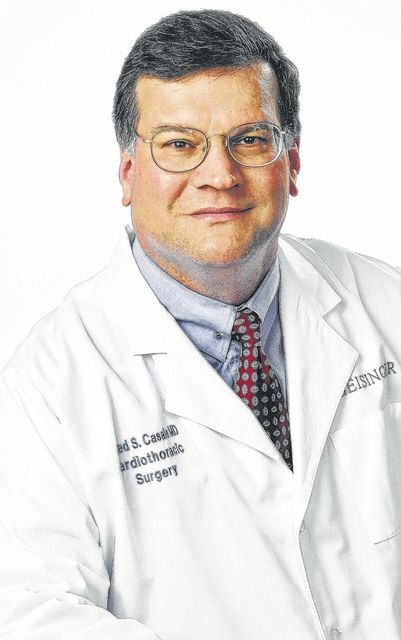Click here to subscribe today or Login.
Driving into the hospital yesterday morning, in the dark, headed to Dunkin Donuts (for coffee, not doughnuts!), I was thinking about what to write about for this column when a great story came on WVIA. It was great because it described a medical success and it related to four of my favorite topics: babies, smoking, vaccination and breastfeeding.
The piece covered a study from the University of Texas Medical Branch in Galveston that showed the rate of ear infections in kids under the age of 1 has fallen dramatically since 1980. From the 1980s to now rates of middle ear infections fell from 18 to 6 percent by 3 months of age, from 39 to 23 percent by 6 months and 62 to 46 percent by 1 year. Folks, that’s a big deal!
Acute otitis media, or middle ear infections are the most common reasons American kids see a doctor, somewhere between 15 and 30 million times each year. By the age of 7, 95 percent of kids have had at least one middle ear infection. Finding reasons that these rates have fallen is really important.
We all know how distressed both infants and their parents are when kids get fussy, feverish and start pulling at their ears. This usually happens soon after a cold, flu or the “sniffles.” The Eustachian tubes are short tunnels that run from the upper back of the throat, behind the nose into each ear behind the eardrums. Normally they help equalize the pressure on both sides of the eardrum and are responsible for the “popping” sensation when we change altitude, yawn or swallow.
In kids (and sometimes in adults) the irritation and swelling of the tissues in the nose, throat and head that occurs with colds, the flu and other respiratory infections causes these tubes to close off, trapping fluid and germs behind the eardrum where an infection develops and builds up pressure that causes the drum to bulge, turn red and angry and hurt like crazy. Most of these resolve with or without antibiotics when the fluid either spontaneously drains as the swollen tubes reopen, or sometimes small eardrum perforations let the fluid out through the ear. Complications can occur but are uncommon. Recurrent ear infections do plague some kids and can be treated with tiny tubes placed surgically across the eardrum to assure drainage. About a million kids a year in the U.S. have this done!
There’s a lot of controversy about if and when to treat ear infections in kids and many pediatricians normally wait 48 to 72 hours before using antibiotics unless a kid is under 6 months of age, has both ears involved or has drainage from their ears.
Because ear infections are so annoying at best, distressing always and serious sometimes, anything we can do to minimize their occurrence is a great. The Texas study suggests three big reasons for the recent decline. First, more and more kids are getting the recommended vaccine for the Pneumococcal germs that cause respiratory infections and up to 80 percent of ear infections. Most parents are protecting their kids older than 6 months of age with seasonal flu vaccines too; this reduces the chances of ear infections during flu season by one third.
The second big help is that fewer and fewer kids are exposed to second hand smoke. Kids of smokers have a 38 percent higher risk of ear infections. In 1965 42 percent of American adults smoked, in 2014 that had fallen to just 17 percent; if you smoke, quit today, for you and the kids.
The third helpful trend is the increasing numbers of babies that are breastfeed through at least 6 months. Not only does the immune boosting effect of breast milk help, but the mechanics of suckling and the decrease in pooling of milk in the baby’s mouth when compared to bottle feeding, seems to keep fluid out of the Eustachian tubes.
So now you’re all up to speed on best practices for preventing and managing acute otitis media in kids. Vaccinate, breastfeed and don’t smoke. And kiss and snuggle babies frequently; especially grandchildren with round faces and reddish hair.








